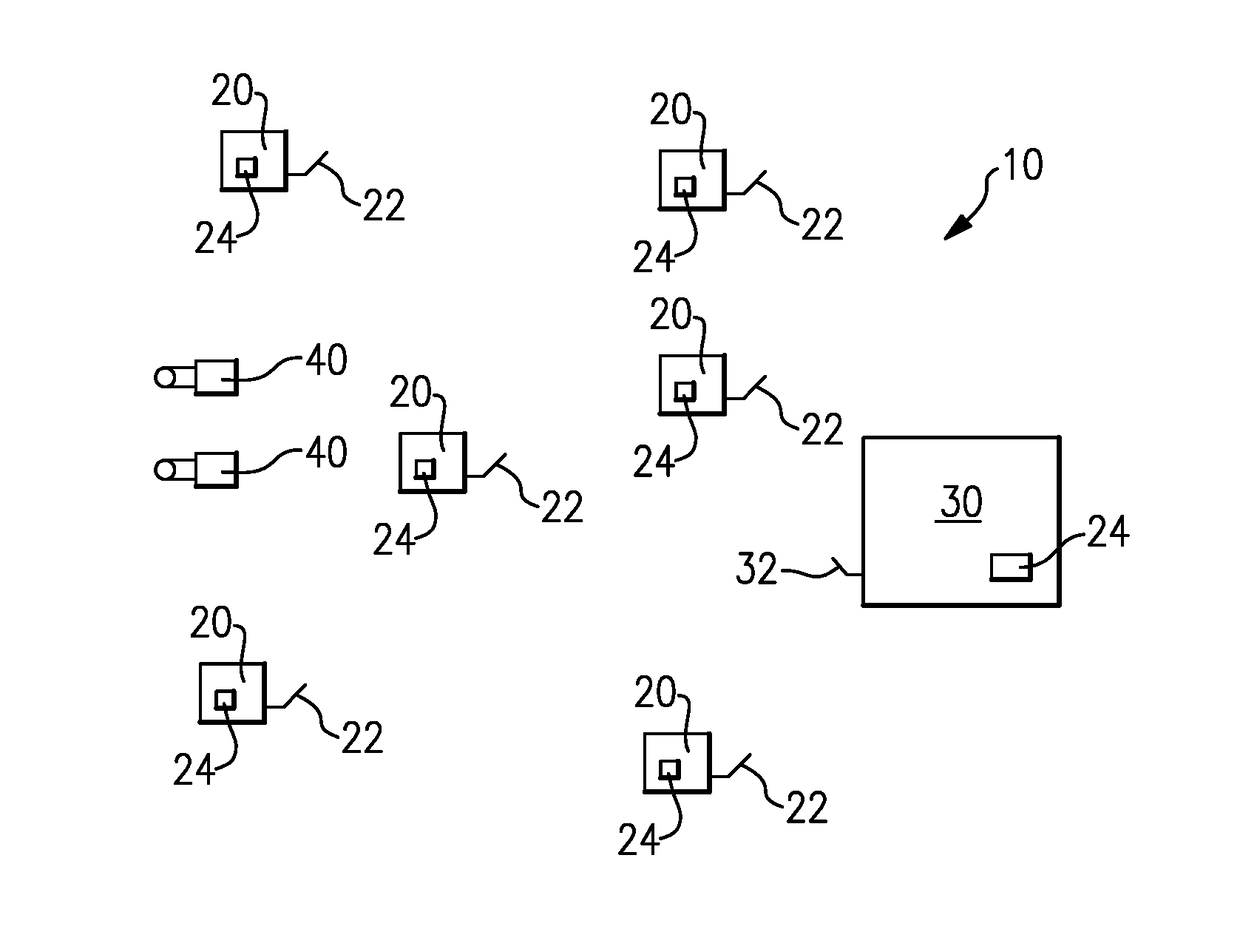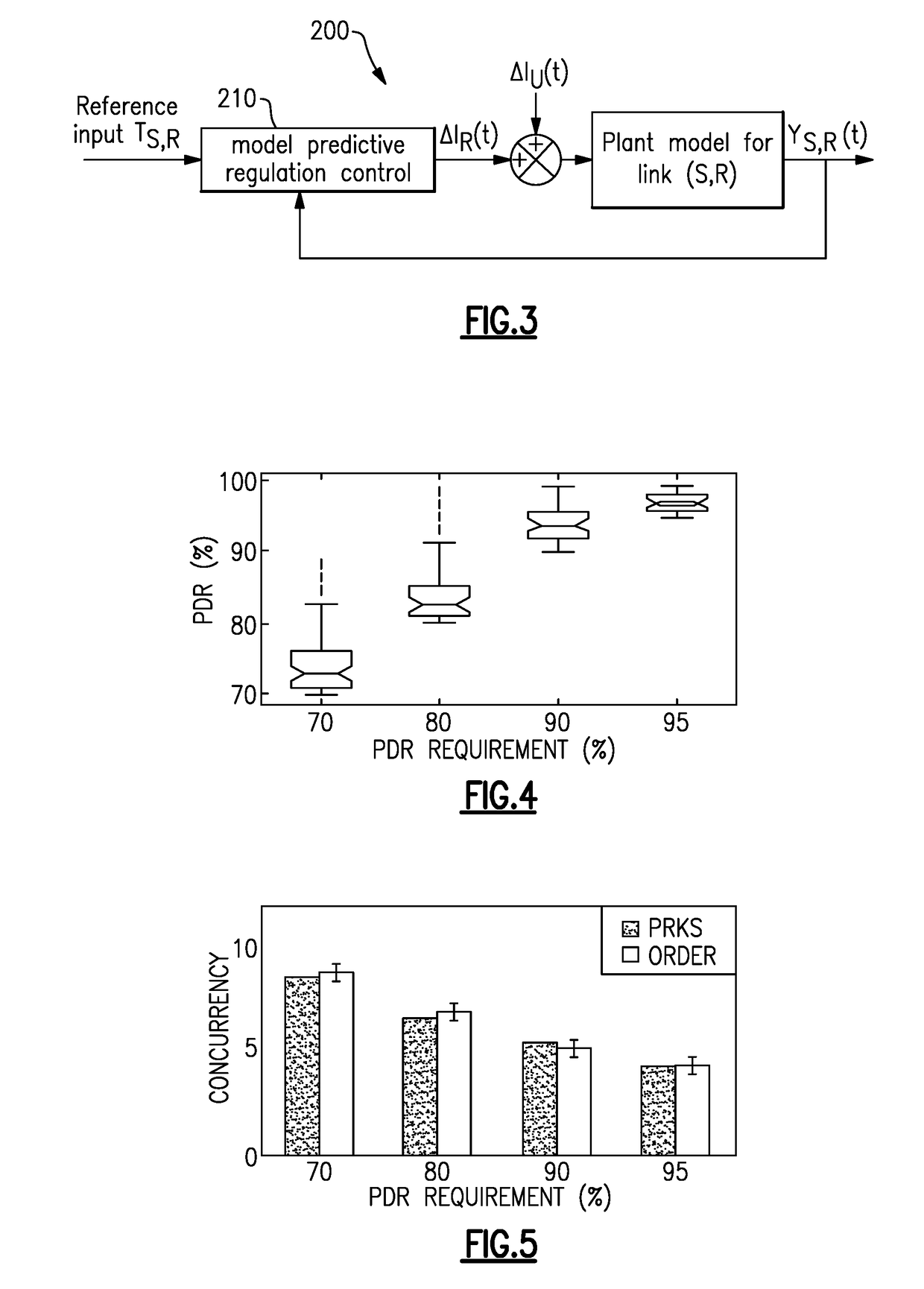Multiscale approach to predictable wireless networking
a wireless network and multi-scale technology, applied in the field of wireless networking, can solve the problems of major source of uncertainty, interference between concurrent transmissions, and wireless communication is subject to inherent dynamics and uncertainties within the system and environment, and achieves the effects of avoiding interference between concurrent transmissions
- Summary
- Abstract
- Description
- Claims
- Application Information
AI Technical Summary
Benefits of technology
Problems solved by technology
Method used
Image
Examples
Embodiment Construction
[0048]FIG. 1 illustrates an example distributed sensing and control network 10 including multiple distributed sensors 20 and a central controller 30. Each of the distributed sensors 20 includes a wireless transmitter / receiver 22, and the central application controller 30 includes a wireless transmitter / receiver 32. Each of the sensors 20 and the central application controller 30 also includes a local controller 24 having a memory. The memory on the local controller 24 stores instructions for operating the corresponding remote sensor 20 or central application controller 30. Included among these instructions is a physical-ratio-K scheduling (PRKS) protocol instruction that controls the message scheduling from each of the sensors 20 in the manner described below. The illustrated example sensing and control network 10 can be any sensing and control network having multiple sensors 20 in close physical proximity to each other including, but not limited to, a distributed sensing and contro...
PUM
 Login to View More
Login to View More Abstract
Description
Claims
Application Information
 Login to View More
Login to View More - R&D
- Intellectual Property
- Life Sciences
- Materials
- Tech Scout
- Unparalleled Data Quality
- Higher Quality Content
- 60% Fewer Hallucinations
Browse by: Latest US Patents, China's latest patents, Technical Efficacy Thesaurus, Application Domain, Technology Topic, Popular Technical Reports.
© 2025 PatSnap. All rights reserved.Legal|Privacy policy|Modern Slavery Act Transparency Statement|Sitemap|About US| Contact US: help@patsnap.com



